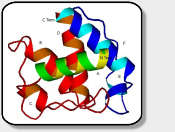This section provides a basic introduction to the main techniques of DNA manipulation used in molecular biology. It ends with a case study taken from a typical research project.
- First Principles: introduction
A brief history and some basic terminology
Notes on terminology
Historical notes on DNA technology
- DNA Properties and in vitro Preparation
- DNA Manipulation 1: Separation and Further Purification of DNA
Plasmids and recombinant DNA vectors
The replication origin and the replicon
Selection markers
Promoters, terminators and translation signals
Cloning sites
- DNA Manipulation 2: Features of Recombinant DNA
Designing a cloning experiment
Vector type
Host cell type
Strategy
Preparation of DNA and E.coli for recombinant cloning
Gel electrophoresis of DNA
Mutagenesis: design and implementation
DNA sequencing
- DNA Manipulation 3: In vitro Enzymatic Techniques: copying and splicing
DNA and RNA nucleases
DNA methylases
DNA and RNA polymerases
DNA and RNA ligases
DNA alkaline phosphatases and DNA polynucleotide kinase
DNA topoisomerases
DNA recombinases
DNA glycosylases
DNA Manipulation 4:
Gene Isolation, PCR, Mutagenesis and Sequencing
Step 1a - Identification of the target region
Where sequence data concerning the target region exists: Use a database accession
Step 1b - Identification of the target region
Where there is no available sequence data concerning the target region: Use molecular biology
Step 2a - Isolation of the target region
Hybridisation methods
Step 2b - Isolation of the target region
The Polymerase Chain Reaction
Futher Considerations and Experimental Strategies
Case Study - Cloning expression and mutagenesis of DNA repair enzymes for structural analysis
|
